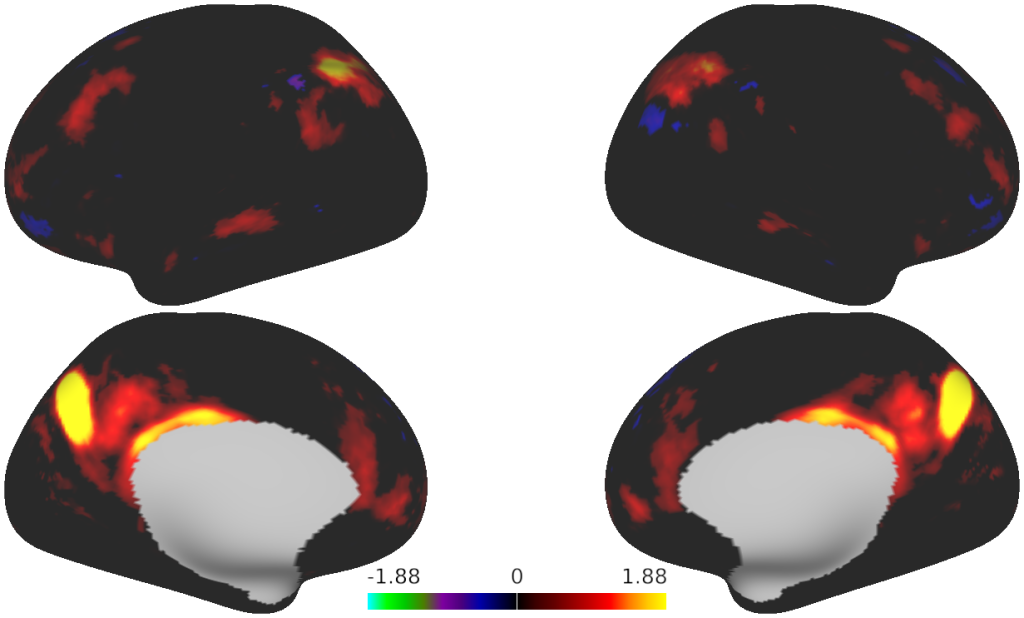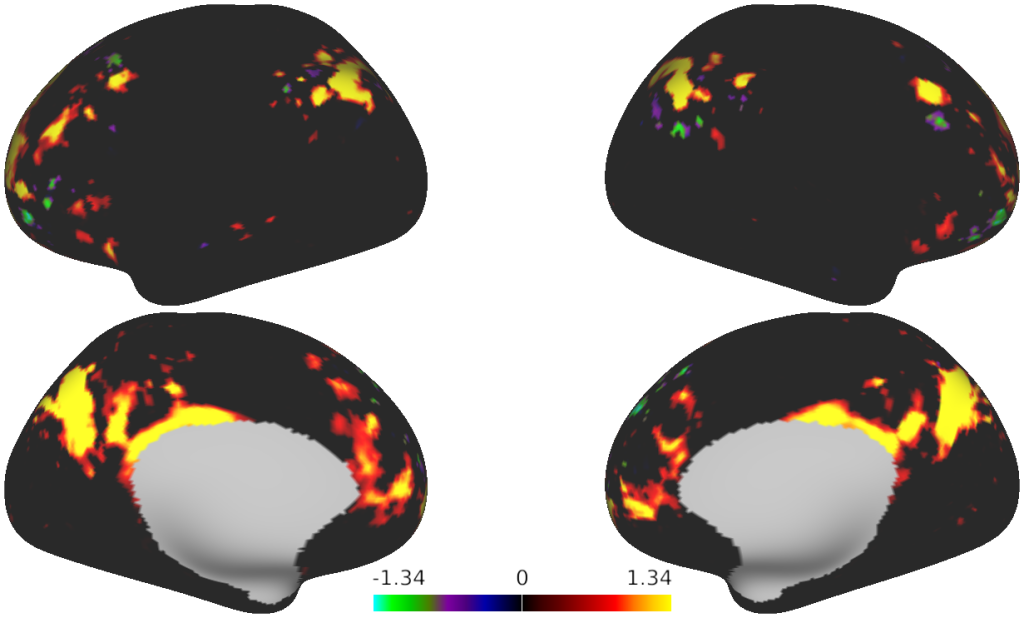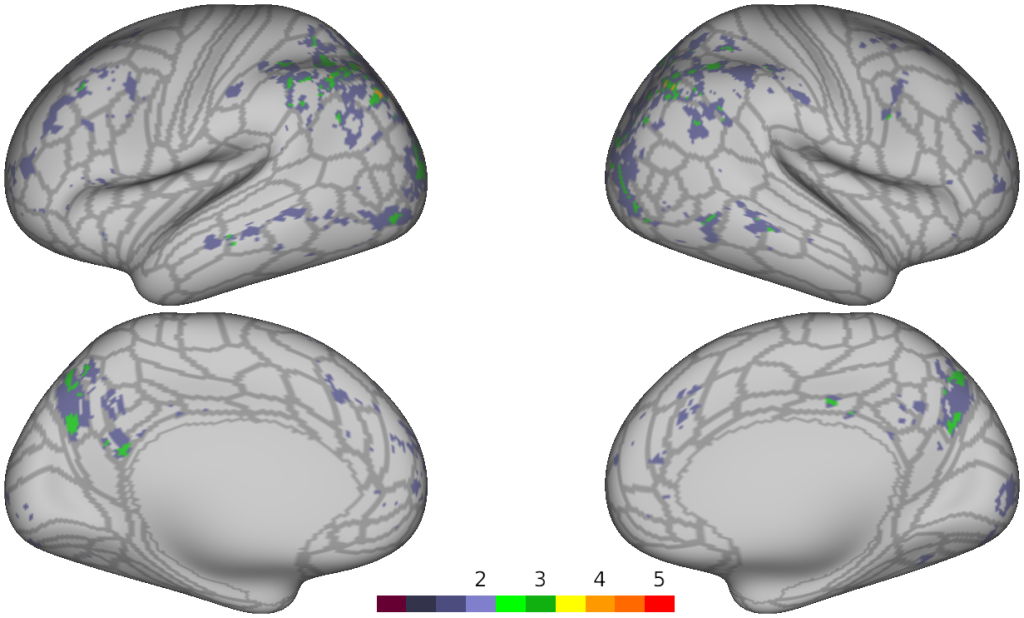FULL TITLE:
Evaluating functional brain organization in individuals and identifying contributions to network overlap
SPECIES:
Human
ABSTRACT:
Individual differences in the spatial organization of resting state networks have received increased attention in recent years. Measures of individual-specific spatial organization of brain networks and overlapping network organization have been linked to important behavioral and clinical traits and are therefore potential biomarker targets for personalized psychiatry approaches. To better understand individual-specific spatial brain organization, this paper addressed three key goals. First, we determined whether it is possible to reliably estimate weighted (non-binarized) resting state network maps using data from only a single individual, while also maintaining maximum spatial correspondence across individuals. Second, we determined the degree of spatial overlap between distinct networks, using test-retest and twin data. Third, we systematically tested multiple hypotheses (spatial mixing, temporal switching, and coupling) as candidate explanations for why networks overlap spatially. To estimate weighted network organization, we adopt the Probabilistic Functional Modes (PROFUMO) algorithm, which implements a Bayesian framework with hemodynamic and connectivity priors to supplement optimization for spatial sparsity/independence. Our findings showed that replicable individual-specific estimates of weighted resting state networks can be derived using high quality fMRI data within individual subjects. Network organization estimates using only data from each individual subject closely resembled group-informed network estimates (which was not explicitly modeled in our individual-specific analyses), suggesting that cross-subject correspondence was largely maintained. Furthermore, our results confirmed the presence of spatial overlap in network organization, which was replicable across sessions within individuals and in monozygotic twin pairs. Intriguingly, our findings provide evidence that overlap between 2-network pairs is indicative of coupling. These results suggest that regions of network overlap concurrently process information from both contributing networks, potentially pointing to the role of overlapping network organization in the integration of information across multiple brain systems.



